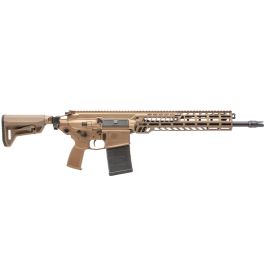The previous thread was locked, correctly so, as a driveby. But this is I think a topic worth discussing so I'm bringing it back hopefully done right.
I think it is a fair topic to discuss. I personally have mixed feelings about the military "upgrading" to a more powerful rifle but I'm open to giving it a try and see what happens. They tried to use the 7.62 cartridge as the primary rifle 50 years ago and determined the extra power wasn't worth the added weight, greater recoil and reduced ammo capacity.
The new rifle is simply a newer high-tech M14 firing a hotter cartridge. I'm worried that it may prove to have the same shortcomings as the original M14.
That doesn't mean I don't think it shouldn't be deployed, just not to every soldier. Issuing 2-3 different rifles in different cartridges to a unit MIGHT be a better idea, maybe not. I know the logistics of supplying different ammo is a concern. But we made it work 70 years ago during WW2. They managed to keep our troops supplied with 30-06, 30 Carbine 12 ga., 50 cal. and 45 ACP even with the logistics available back then. And each unit had a variety of tools to choose from depending on the job.
Some Said It Would Never Happen- Bye-Bye M4!
Revolutionizing Soldier firepower: US Army adopts next-gen weapons First photos of 101st Airborne soldiers testing the Army’s new rifles 35W
www.thehighroad.org
I think it is a fair topic to discuss. I personally have mixed feelings about the military "upgrading" to a more powerful rifle but I'm open to giving it a try and see what happens. They tried to use the 7.62 cartridge as the primary rifle 50 years ago and determined the extra power wasn't worth the added weight, greater recoil and reduced ammo capacity.
The new rifle is simply a newer high-tech M14 firing a hotter cartridge. I'm worried that it may prove to have the same shortcomings as the original M14.
That doesn't mean I don't think it shouldn't be deployed, just not to every soldier. Issuing 2-3 different rifles in different cartridges to a unit MIGHT be a better idea, maybe not. I know the logistics of supplying different ammo is a concern. But we made it work 70 years ago during WW2. They managed to keep our troops supplied with 30-06, 30 Carbine 12 ga., 50 cal. and 45 ACP even with the logistics available back then. And each unit had a variety of tools to choose from depending on the job.


